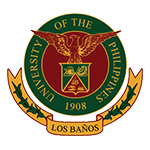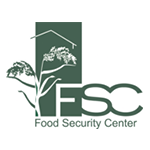
A multidisciplinary group of experts from academia, research centers, and funding organizations proposes a Global Surveillance System (GSS) to improve global food security by preventing crop diseases. The GSS would extend and adapt established biosecurity practices and networking facilities, allowing countries to respond much more quickly to disease outbreaks. The framework is the outcome of a meeting held in 2018 at the Rockefeller Foundation’s Bellagio Center in Italy, convened by the International Center for Tropical Agriculture (CIAT), and details were published on 28 June in Science(1).
Global agricultural production must increase by 70 percent by 2050 to meet the growing demand for food, the authors write. But every year, pests and crop diseases cause average yield losses of between17–30 percent, on average, in staple crops — including rice, maize, potato, and soybean — that account for around half of the global human calorie intake.
Crop diseases are increasingly emerging and re-emerging owing to climate change and global trade. However, existing strategies to contain crop disease are often inefficient, particularly in developing countries.
According to Carvajal-Yepes and colleagues, the GSS — which they hope will gain traction in 2020, which has been designated International Year of Plant Health by the United Nations — could significantly reduce food lost to pests, with a particular focus six major food crops: maize, potato, cassava, rice, beans, and wheat.
Case in point
The initiative was motivated by a recent discovery of Cassava Mosaic Disease (CMD) — a whitefly-transmitted virus that primarily infects cassava plants — in Cambodia in 2015. However, the outbreak was not reported until 2016. The disease rapidly spread, reaching Thailand and Vietnam in 2018, placing millions of smallholders at risk — altogether, the total export revenue of cassava in the region is US$4 billion (around €3.5 billion). The disease is now present across 10 percent of the cultivated land in the region.
The proposal also draws upon lessons learned from the wheat blast outbreak in Bangladesh in 2016 and an outbreak of the bacteria Xylella fastidiosa that infected olive trees in Europe in 2013.
What would the GSS framework do?
To effectively manage crop disease, the authors suggest “connections between first detectors and downstream responders must be well coordinated”. Current protocols include “active surveillance”, such as laboratories at agriculture inspection stations, and customs and phytosanitary inspectors at borders and ports of entry, and “Passive surveillance”, which refers to the loose networks of farmers, extension workers with national agricultural organizations, scientists and agronomists at research centres and universities, and specialists in agriculture industries.
At present, only 2–6 percent of cargo is effectively inspected. The team also found that diagnosis capacity, information sharing, and communications protocols are lacking or weakly established in most regions. Furthermore, passive surveillance infrastructure has the most in-field monitoring eyes but the least coordination from local to global.
To remedy this disconnect, risk assessment, diagnostic capacities, data sharing, and communication protocols must be strengthened. To this end, the GSS hopes to target surveillance networks at potential sites of disease outbreaks.
Moreover, the framework will make use of cutting-edge technology to rapidly diagnose disease and take advantage of existing communications networks, like social media, to rapidly share this information.
As a final conclusion, the authors “encourage the annual G20 Agriculture Ministers Meeting, the World Bank Group, and FAO, among others, to join efforts toward enhancing cooperation for a multi-year action plan for the proposed GSS to more effectively reduce the impact of crop diseases and increase global food security”.









